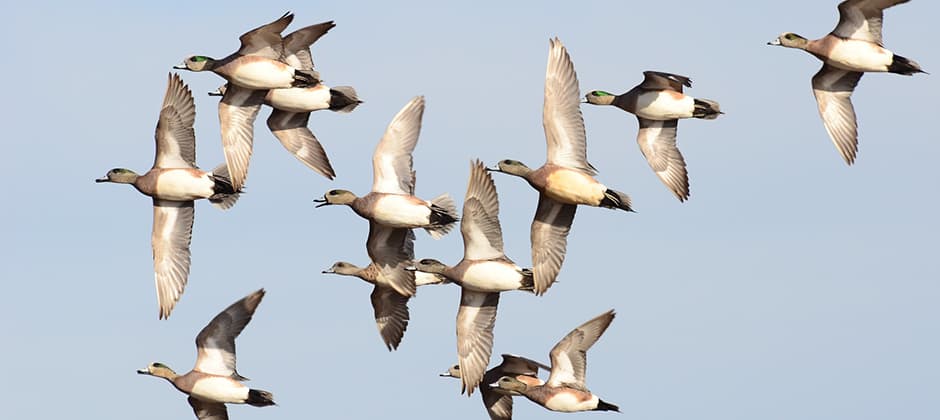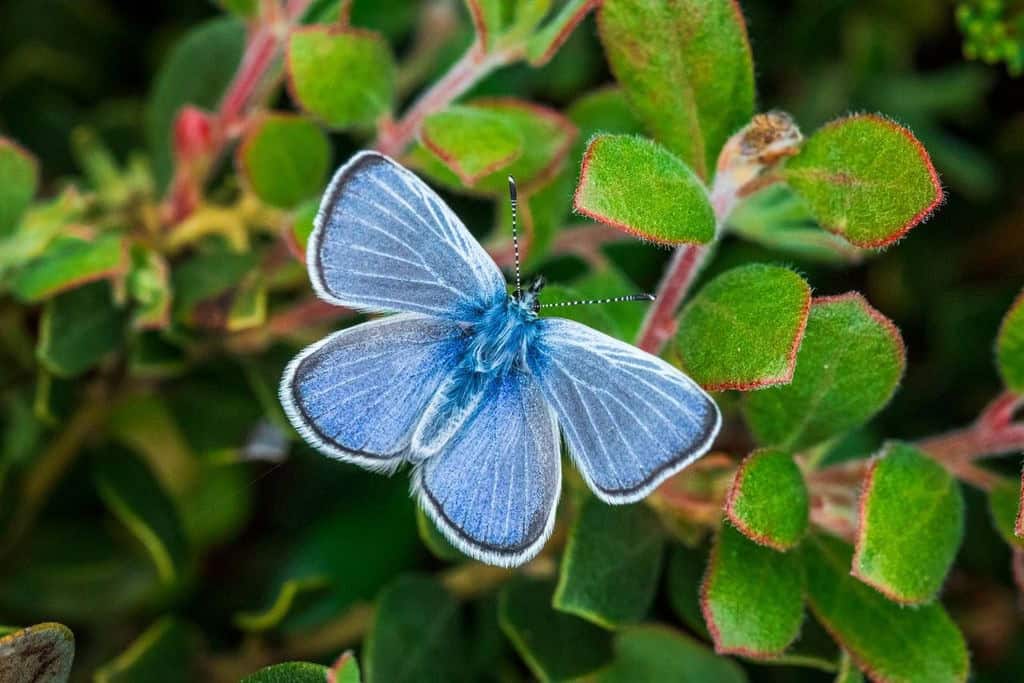Share this article
JWM: Avian flu poses a growing risk for wild birds
Within days of being published, Andrew Ramey’s paper on avian influenza would seem prophetic. “Highly pathogenic avian influenza is an emerging disease threat to wild birds in North America,” the title read.
The article appeared online in the Journal of Wildlife Management on Jan. 11. Three days later, the U.S. Department of Agriculture confirmed an American wigeon (Mareca Americana) harvested in South Carolina was carrying the virus. More cases emerged after just two more days. A blue-winged teal (Anas discors) in South Carolina. A northern shoveler (Spatula clypeata) in North Carolina. Two thousand miles to the northeast, at the top of the Atlantic Flyway, the same H5N1 virus had appeared in a greater black-backed gull (Larus marinus) in Newfoundland and among poultry at a backyard farm on Newfoundland’s Avalon Peninsula.
The cases were the first in wild birds inhabiting North America since 2014-2015, when the U.S. experienced the largest outbreak of avian influenza in history. The disease devastated U.S. poultry farms, causing nearly $3 billion in damages and the loss of over 50 million domesticated birds. Since 2003, the World Health Organization says, H5N1 has sickened at least 863 people worldwide and killed more than half of them.
Ramey and his team wrote the paper in part as a history lesson. A disease that once seemed limited to poultry is now a wildlife disease. They also wrote it in part as a message to wildlife managers to prepare for a disease they never had to think about before.
“What I’ve witnessed over my career over the last 20 years or so is the emergence of a wildlife disease,” said Ramey, director of the Molecular Ecology Laboratory at the U.S. Geological Service’s Alaska Science Center, and the lead author of the paper. “I view highly-pathogenic avian influenza as no longer a poultry disease. I see it as an emerging threat to wildlife worldwide.”
In some cases, the consequences can be devastating. In January, Israeli wildlife officials determined that H5N1 was responsible for killing 5,200 wild cranes on a reserve in northern Israel and infecting another 10,000 as the birds stopped over on their migration from Europe to Africa. Environmental Protection Minister Tamar Zandberg called it “the most serious damage to wildlife in the history of the country.”
Often, though, birds can show no sign of illness, like the three cases this year in the Carolinas. Waterfowl shorebirds, gulls and seabirds can carry the virus without any outward sign of infection, Ramey said, but they can spread it to other birds that can die from the disease, including raptors that consume them and commercial poultry. Humans are unlikely to be affected by wild birds, he said, but it can pose a threat to poultry workers exposed to greater amounts of the virus. (The USDA offers recommendations for hunters to protect themselves.)
Other mammals, including wild harbor seals (Phoca vitulina), gray seals (Halichoerus grypus), and red fox (Vulpes vulpes) are also believed to have contracted the virus from wild birds.
“The most important message from a wildlife perspective, I think, is to convey to managers that to best combat this emerging threat, it would behoove managers to be informed and be ready to respond to any outbreaks that occur,” Ramey said. He encourages managers to be informed, be prepared and be ready to take whatever actions might be required.
Being informed can range from performing Google searches, to reading government updates, to subscribing to listservs that specialize in disease trends. Agencies like the USDA’s Animal and Plant Health Inspection Service and the USGS’ National Wildlife Health Center provide situational updates that can help managers keep track of trends they didn’t need to think much about before.
As managers become more aware of the potential for a disease outbreak, they need to consider how to communicate and coordinate in the event a response is necessary. He stresses a One Health approach that broadly considers environmental health, wildlife health and human health. Actions could range from surveillance to try to gauge how widespread an outbreak is, to manipulating water levels to reduce viral persistence, to requiring hunters to disinfect clothing and gear in areas where an outbreak is occurring, to no action at all.
It’s new territory for most North American wildlife managers. In Alaska, where Ramey is based, managers routinely survey for avian influenza arriving with migrating birds from Eurasia. Low pathogenic viruses occasionally appeared among waterfowl. Then in 2014, migrating birds from East Asia brought highly pathogenic avian influenza across the Pacific, likely first to Alaska, then to British Columbia and the Pacific Northwest. This year’s North American appearances seem to have come from across the Atlantic.
Yet for decades, highly pathogenic avian influenza was unknown in wild birds. The first known case was in 1961. Then in 1996, H5N1 devastated domestic geese in Guangdong, China. Six years later, wild waterfowl, herons, gulls and flamingos in Hong Kong contracted it.
“This is an emerging disease threat to North American birds, where it was historically a poultry disease,” Ramey said. “These latest detections mark only the second outbreak in wild birds in North America in recorded history.”
This article features research that was published in a TWS peer-reviewed journal. Individual online access to all TWS journal articles is a benefit of membership. Join TWS now to read the latest in wildlife research.
Header Image: Waterfowl like American wigeon can carry highly pathogenic avian influenza but often don’t show symptoms. A wigeon in South Carolina was recently found to be carrying the virus. Credit: Brandon Jones/USFWS








